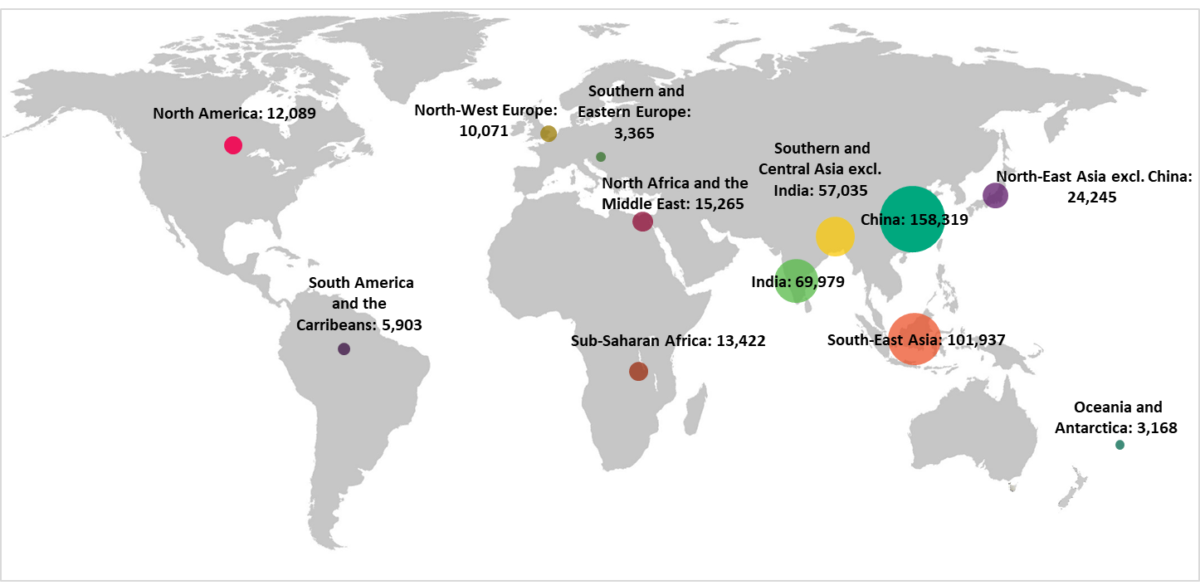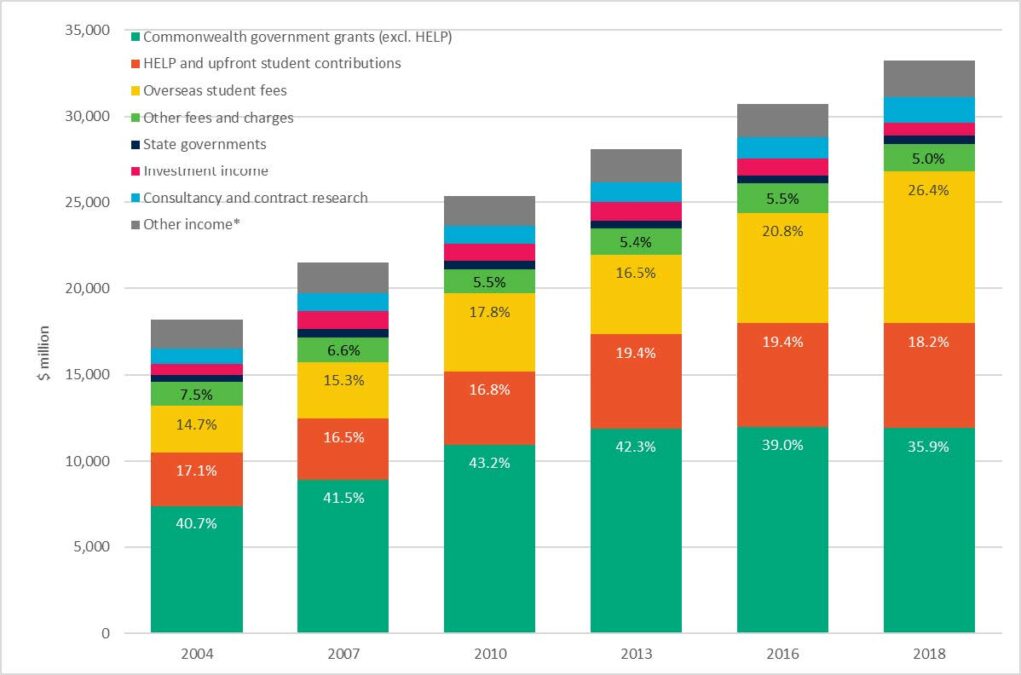
University life and learning reimagined
Forty years ago the typical Australian university student was a young male from a high socio-economic strata, Australian born of Anglo-Celtic descent who fronted up most days of the week to lectures on campus in the company of other undergraduate students. I happened to be one of them.
You might say we were entitled by ‘merit’ to the benefits of a tax-payer funded learning experience – it’s just that these benefits were not available to many others of equal or greater promise across the Australian community. We were beneficiaries of a system that reproduced a particularly narrow social order and cultural outlook.
In the future Australian Universities, though, will look much more like the multi-cultural society in which they reside and almost nothing like the lecture-hall dominated spaces of the past.
The university sector is at an inflection point of unprecedented importance and COVID-19 is just the accelerant for the disruption to come.
University disruption, its only just begun
Over the past 20 years, the student profiles at our older metropolitan universities have come to reflect more fully the country’s Asia-Pacific and southern hemisphere location. Yes in the future a large portion of foreign students will still come from the most populous countries in our region, China and India, but increasingly they will flow from other South East Asian nations, the Pacific Islands and Latin America, as well as from Africa and also the Middle East.
International higher education students in Australia, by country or region of origin, 2018

COVID-19 has laid bare the risk associated with Australian universities high-reliance on revenue from foreign students (one third of all enrolments, up from 4% in 1988), a vulnerability that both regulators and sector leaders could afford to ignore while demand remained strong and borders were open.
Sources of university revenue, in 2018 dollars

While some observers believe the overexposure to demand from China and the current boarder restrictions should cause our 37 public universities to refocus on domestic students, there are, I believe, compelling reasons why we should reject the binary logic of ‘domestic good, international bad’ and the prospect of a retreat to educational nationalism.
Just as foreign student fees have facilitated a (much needed) infrastructure upgrade across higher education campuses – transforming them from sandstone museum pieces to campuses worthy of the fourth (not the first) industrial revolution – so the international student presence has cross subsidised local student education, supported our research prowess and conferred enormous economic benefits on the cities and suburbs in which these students live. And it’s not all about money: international students widen our cultural horizons, affirm our multicultural values and ‘pay it forward’ by becoming offshore ambassadors and advocates whose ties to Australia could – if we manage the relationships well – offer in-program placement opportunities to students and job opportunities for new graduates.
China, no longer Australia’s education quarry
As we emerge from the pandemic, Australia must prepare for even greater disruption in the higher education sector. Australia must cease to regard China as an educational quarry: China is rapidly building universities to cater for more of their own students as well as seeking to make itself the destination of choice for foreign students. Universities will be forced to work harder (including modifying their China-focused pricing policies) at enticing students from much more diverse sources – and we will be a better destination because of it.
Digital study and AI assisted student selection
The digital disruption intensified by COVID-19 is here to stay: There will be no snap back to campus-based learning when the current crisis subsides, the ‘sandstone allure’ has had its day and digital content design and delivery is the way of future learning. Blended learning and offerings for overseas and local students will see all students taking advantage of immersive on-campus experiences as well as remote study.
Increasingly, artificial intelligence platforms and randomised interview questions will be used to lift quality control in student intake. And for its part, the sector will need to offer quality work-integrated job placements as part of the learning experience. The University of Sydney Business School’s award winning JobSmart program began as a scheme to deepen the co-curricular work and social immersion opportunities for international post graduate students. It is now being mainstreamed through the School’s pre-experience master’s programs and it’s fair to say all curricula could be enriched with similar work programs.
Diverse learners and different courses
We already know that full-time postgraduate degree study is in decline within the Australian market (though not so in emerging markets).Increasingly post-bachelor’s domestic students will be professionals from public sector agencies, businesses and not for profit organisations – all candidates who will want to balance their education with their working lives. Domestically, the accent is shifting rapidly to part-time study, intensive courses and micro-credentialing.
To date, with just a few exceptions, the sector has marketed itself almost exclusively as a provider of campus-based degree studies: this must now change. While degrees will remain core business for some time, the rise of lifelong learning and digital content delivery is an exciting opportunity to diversify its product mix to upscale non-award and pre-award course offerings. ‘Taster’ classes and 1-2 day online or on-site executive education intensives for practitioners across cutting-edge topics are some of the diverse ways education will both fragment and offer more bespoke learning experiences.
In the future universities will face more competition from non-university education providers: forming strategic alliances with other local and international institutions will broaden curricula offerings and strengthen the value of a university education over other options.
The Australian university student of the future will not fit an identifiable demographic, social or cultural stereotype –their learning experience will be defined by choice and preference – not by an outdated one-size-fits-all formula. They may come from Australia; they may come from anywhere; they will learn in person and remotely; they will be fresh out of school and also tracking at any point along their career, their learning may be full-time, part-time or convenience-time; and, yes, they will pay (at various rates) for the experience.
Our best educators must also be given every bit as much Kudos as our ‘rock-star’ researchers. They must have career pathways, job security, pay and recognition worthy of their talent.
Hopefully both students and educators will feel enriched by the shared learning experience that lies ahead. All the better if this also resources and empowers our universities without imposing further burden on the Australian taxpayer.
This article is adapted from Australian Universities, International Students and China, Taking Stock and Taking the High Road, a discussion paper prepared for the BCA/Asian Society Asia Taskforce. The views expressed are those of the author and not necessarily those of the BCA, the Asia Society or the author’s university or school.
This is part of a series of insights related to Coronavirus (COVID-19) and its impact on business.
John Shields is Academic Director International at The University of Sydney Business School and Professor of Human Resource Management and Organisational Studies.
Share
We believe in open and honest access to knowledge. We use a Creative Commons Attribution NoDerivatives licence for our articles and podcasts, so you can republish them for free, online or in print.







